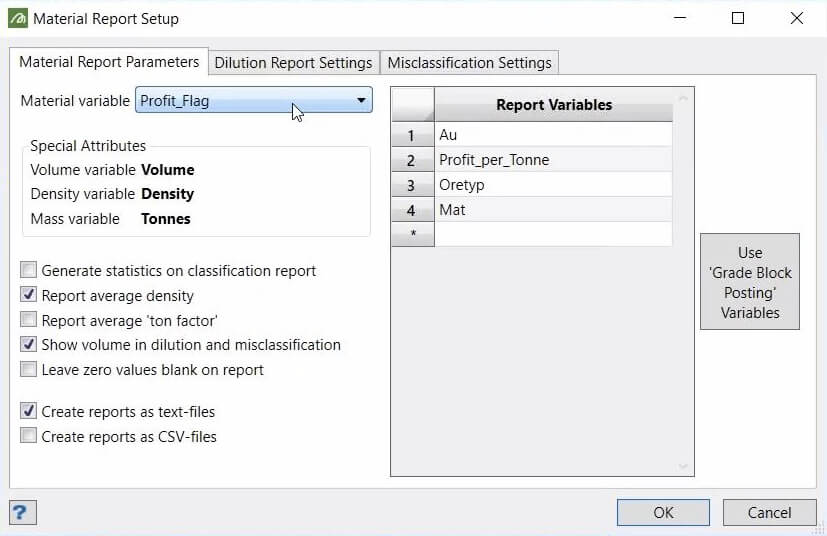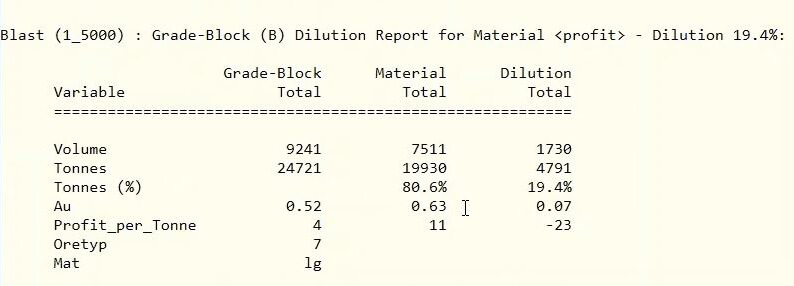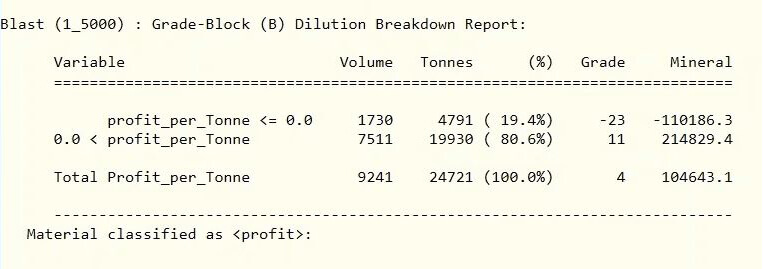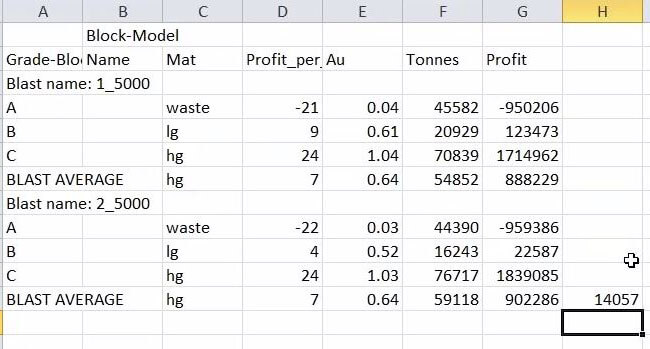How to optimise your grade control process to maximise profit
Grade control is crucial to the success and profitability of your mine plan, and done properly, results in the maximum amount of valuable material being extracted, for the least amount of dilution. In this blog, we’re going to share two tips to help you introduce greater consistency and profitability into the grade control process.
We covered this topic in greater depth during our webinar of a similar name, Optimising your grade control process to maximise profit. The webinar is well worth watching. During this article we’ll point you to parts of the webinar where you can learn how to perform our recommendations.
In this article, we’ll show you how to:
- Increase the value of each blast
- Streamline your grade control process
- Create reports that validate your grade block boundaries
- Achieve greater consistency during your grade control process and ultimately, efficiency and profit with Grade Control Optimiser.
Two tips to improve your grade control process:
In most cases, the quality of grade control depends heavily on human judgement. For example, one geologist may draw block boundaries slightly differently to another. Such decisions can have a real impact on the amount of waste being extracted and it’s a big responsibility for the individual geologists making these decisions.
Can we ensure grade control geologists are given the support they need to make the right decisions time after time?
Tip 1 – Report on profit to help you to validate your grade control process
Tip 2 – Use optimisation technology to improve the consistency of your grade control calculations and the profitability of your blasts
# 1 – Report on profit to help you to validate your grade control process
This is really useful for when you’re setting up reports on your grade control process. You should be able to use this tip in most Grade Control platforms, not only Vulcan.
When setting up your blast reports, Maptek’s Richard Jackson recommends using ‘Profit’ (see below) rather than true material type, as the parameter for reporting on your blast. Why?
Because your subsequent report will help you quantify the effect misclassified material is having on the profitability of ore blocks.

In his misclassification report, Richard learns that he may want to adjust the way he’s setup his blocks. Let’s see why…
Almost 20% of Richard’s example blocks are making a loss (see below):

His current dilution is giving him a grade of 0.52g/t, rather than 0.63g/t (see below).
Richard is losing almost 1/2 of the value of his blast by extracting non-profitable blocks (the mineral column represents total profit)

In summary: By using Profit as the reporting parameter on his blast reports, Richard can quickly see that he needs to reduce dilution in order to increase the profitability of his blasts.
How to do it:
#2 – Use optimisation technology to improve the consistency of your grade control calculations and the profitability of your blasts
As we mentioned at the beginning of this article, parts of the Grade Control process remain largely manual and dependent on our own judgement.
Richard gives the following example, “While we can take care to draw the block boundaries with attention to all the dependant variables and the minimum mining widths, two geologists doing the same blast are certainly going to give slightly different block boundaries”.
Is there anything we can do to support grade control geologists in their decision making? Yes.
The Vulcan Grade Control Optimiser, a new function in Vulcan, eliminates any inconsistencies by choosing the optimum location or destination of all your blocks, based on economic constraints and mining widths.
In practice, this means that geologists on site all get the same starting point, the same polygons that they can edit for the Grade Control, rather than making all of these critical, original decisions for themselves.
During the webinar, Richard compares a) manually created grade blocks with b) blocks optimised by Grade Control Optimiser, using the same process and variables.
The result? Richard generates over $14000 dollars in additional value by optimising his blast in Grade Control Optimiser (see table below). Consider for a moment the further value that could be achieved on a week-by-week or month-by-month basis. In essence, you can generate greater value from the same ground.

How to do it:
To see Richard’s full experiment and how he setup his example blasts and reports, go to 11m:24s on the webinar.
In summary:
Grade Control Optimiser can help to streamline the grade control process and increase the consistency of blast calculations. It can also deliver greater blasting profitability:
- Less back and forward between creating and checking the block boundary locations
- We get the optimum location right the first time, but you can still adjust the position as needed
- It’s a quick and repeatable process
We hope you enjoyed this article. If you would like to learn more about grade control in Vulcan, or the Grade Control Optimiser, get in touch with us.





